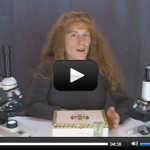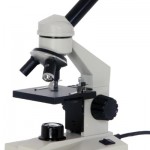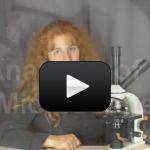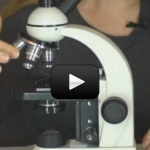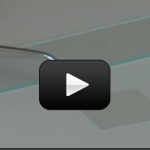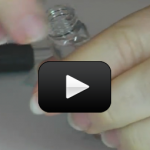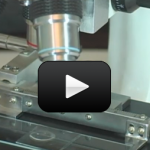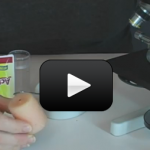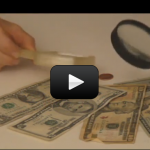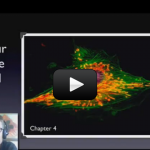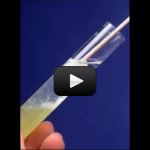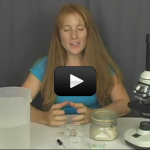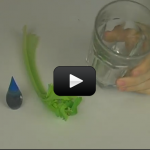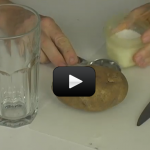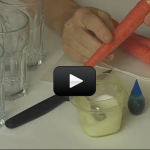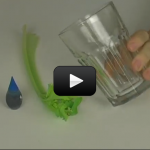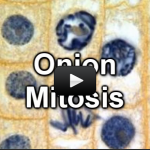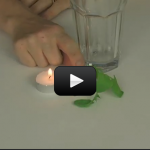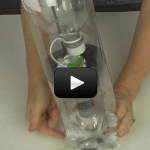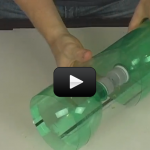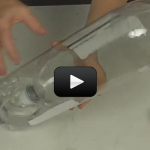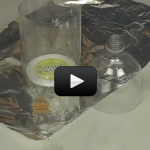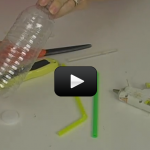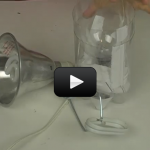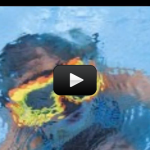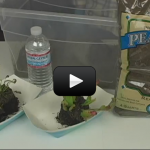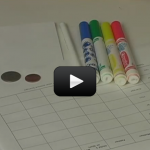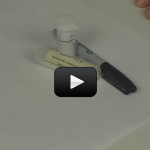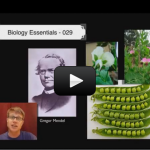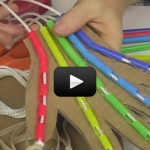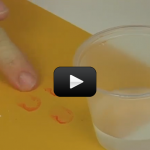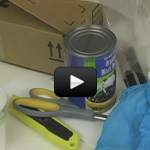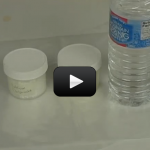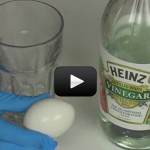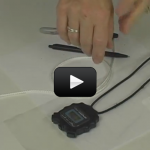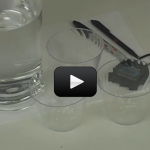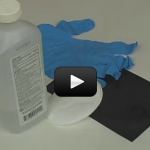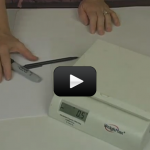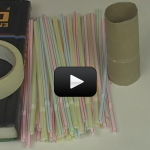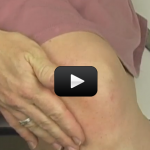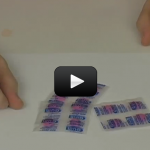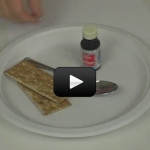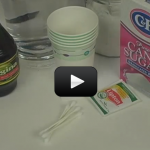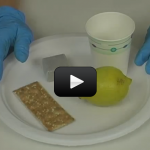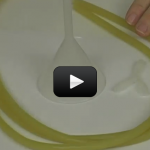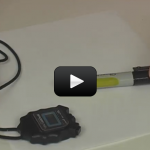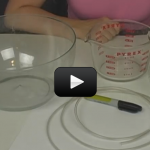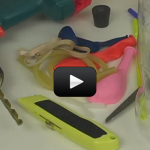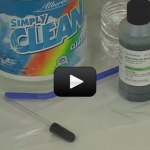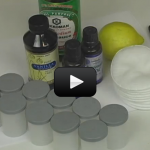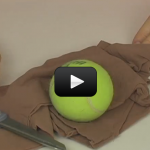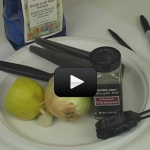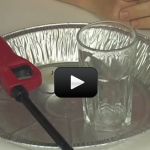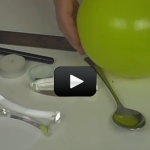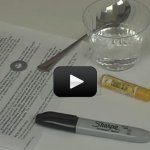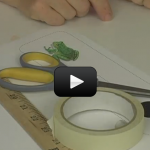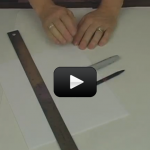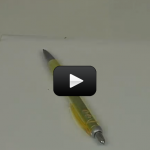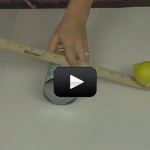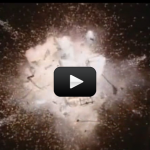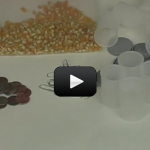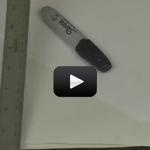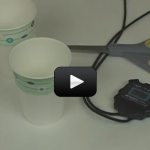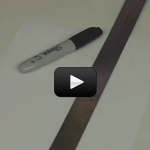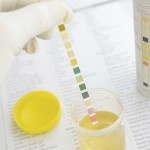Microscope Lab Introduction
This is an introduction to the microscope, and we’re going to not only how to use a microscope but also cover the basics of optics, slide preparation, and why we can see things that are invisible to the naked eye. Microscopes are basically two lenses put together to make things appear larger. |
Microwhat?
Welcome to our unit on microscopes! We’re going to learn how to use our microscope to make things appear larger so we can study them more easily. Think about all the things that are too small to study just with your naked eyeballs: how many can you name? Let’s start from the inside out – … Continue reading "Microwhat?" |
Anatomy of the Microscope
Nose? Objective? Stage? What kind of class is this? Well, some of the names may sound a bit odd, but this video will show you what they are and how they are used. As you watch the video, touch the corresponding part of your microscope to get a feel for how it works. NOTE: Be … Continue reading "Anatomy of the Microscope" |
How to Use a Microscope: Optics, Observing, and Drawing Techniques
How do the lenses work to make objects larger? We’re going to take a closer look at optics, magnification, lenses, and how to draw what you see with this lesson. Here’s a video to get you started: Here’s what you do: |
Preparing a Dry Mount Slide
Make sure you’ve completed the How to Use a Microscope activity before you start here! This is simplest form of slide preparation! All you need to do is place it on the slide, use a coverslip (and you don’t even have to do that if it’s too bumpy), and take a look through the eyepiece. … Continue reading "Preparing a Dry Mount Slide" |
Preparing a Wet Mount Slide
Make sure you've completed the How to Use a Microscope activity before you start here!Anytime you have a specimen that needs water to live, you'll need to prepare a wet mount slide. This is especially useful for looking at pond water (or scum), plants, protists (single-cell animals), mold, etc. When you keep your specimen alive … Continue reading "Preparing a Wet Mount Slide" |
Slide Preparation: Staining
Make sure you've completed the How to Use a Microscope and also the Wet Mount activities before you start here!If your critter is hard to see, you can use a dye to bring out the cell structure and make it easier to view. There are lots of different types of stains, depending on what you're … Continue reading "Slide Preparation: Staining" |
Slide Preparation: Heat Fixes
Make sure you've completed the How to Use a Microscope and also the Wet Mount and Staining activities before you start here!If you tried looking at animal cells already, you know that they wiggle and squirm all over the place. And if you tried looking when using the staining technique, you know it only makes … Continue reading "Slide Preparation: Heat Fixes" |
Microscopes and Telescopes
Hans Lippershey was the first to peek through his invention of the refractor telescope in 1608, followed closely by Galileo (although Galileo used his telescope for astronomy and Lippershey’s was used for military purposes). Their telescopes used both convex and concave lenses. A few years later, Kepler swung into the field and added his own … Continue reading "Microscopes and Telescopes" |
Cell in Action
Cells make up every living thing. Take a look at all the living things you can see just in your house. You can start off with you and your family. If you have any pets, be sure to include them. Don’t forget about houseplants as well – they’re alive. Now take a walk outside. You’ll … Continue reading "Cell in Action" |
Extracting DNA in your Kitchen
If the cell has a nucleus, the DNA is located in the nucleus. If not, it is found in the cytoplasm. DNA is the genetic material that has all the information about a cell. DNA is a long molecule found in the formed by of two strands of genes. DNA carries two copies—two “alleles”—of each … Continue reading "Extracting DNA in your Kitchen" |
Protozoa in the Grass
This experiment allows you to see protozoa, tiny-single celled organisms, in your compound microscope. While I can go in my backyard and find a lot of interesting pond scum and dead insects, I realize that not everybody has a thriving ecosystem on hand, especially if you live in a city. I am going to show … Continue reading "Protozoa in the Grass" |
Celery Stalk Water Race
If you think of celery as being a bundle of thin straws, then it’s easy to see how this experiment works. In this activity, you will get water to creep up through the plant tissue (the celery stalk) and find out how to make it go faster and slower. The part of the celery we … Continue reading "Celery Stalk Water Race" |
Osmosis in Potatoes & Beans
One way substances can get into a cell is called passive transport. One special kind of passive transport is osmosis, when water crosses into the cell. This experiment allows you to see the process of osmosis in action. Are you ready? |
Cool Carrot Osmosis
The carrot itself is a type of root—it is responsible for conducting water from the soil to the plant. The carrot is made of cells. Cells are mostly water, but they are filled with other substances too (organelles, the nucleus, etc). We’re going to do two experiments on a carrot: first we’re going to figure … Continue reading "Cool Carrot Osmosis" |
Membranes
Here’s a fun experiment that shows you how much stuff can pass through a membrane. Scientist call it the semi-permeability of membranes. Before we start, take out your science journal and answer this question: What do you think will happen when we stick a piece of celery into a glass of regular water. Anything special? … Continue reading "Membranes" |
Onion Mitosis
In eukaryotes there is a nucleus, so a more complex process called mitosis is needed with cell division. Mitosis is divided into four parts, or phases: Phase 1 – Prophase: In this phase the nuclear membrane begins to break down and the DNA forms structures called chromosomes. Phase 2 – Metaphase: In this phase the … Continue reading "Onion Mitosis" |
Carbon Dioxide and Photosynthesis
Photosynthesis is a process where light energy is changed into chemical energy. As we said in the last section, this process happens in the chloroplast of plant cells. Photosynthesis is one of the most important things that happen in cells. In fact, photosynthesis is considered one of the most important processes for all life on … Continue reading "Carbon Dioxide and Photosynthesis" |
Einstein’s Garden
Mass and energy are conserved. This means you can’t create or destroy them, but you can change their location or form. Most people don’t understand that the E energy term means all the energy transformations, not just the nuclear energy. The energy could be burning gasoline, fusion reactions (like in the sun), metabolizing your lunch, … Continue reading "Einstein’s Garden" |
Water Cycle Column: Is Rain Pure?
When birds and animals drink from lakes, rivers, and ponds, how pure it is? Are they really getting the water they need, or are they getting something else with the water? This is a great experiment to see how water moves through natural systems. We’ll explore how water and the atmosphere are both polluted and … Continue reading "Water Cycle Column: Is Rain Pure?" |
Eco-Column:
What grows in the corner of your windowsill? In the cracks in the sidewalk? Under the front steps? In the gutter at the bottom of the driveway? Specifically, how doe these animals build their homes and how much space do they need? What do they eat? Where do fish get their food? How do ants … Continue reading "Eco-Column:" |
Terraqua Column: How does water affect land and animals?
How does salt affect plant growth, like when we use salt to de-ice snowy winter roads? How does adding fertilizer to the soil help or hurt the plants? What type of soil best purifies the water? All these questions and more can be answered by building a terrarium-aquarium system to discover how these systems are … Continue reading "Terraqua Column: How does water affect land and animals?" |
Predator-Prey: Who Eats Whom?
The way animals and plants behave is so complicated because it not only depends on climate, water availability, competition for resources, nutrients available, and disease presence but also having the patience and ability to study them close-up. We’re going to build an eco-system where you’ll farm prey stock for the predators so you’ll be able … Continue reading "Predator-Prey: Who Eats Whom?" |
Make an Insect Aspirator
Some insects are just too small! Even if we try to carefully pick them up with forceps, they either escape or are crushed. What to do? Answer: Make an insect aspirator! An insect aspirator is a simple tool scientists use to collect bugs and insects that are too small to be picked up manually. Basically … Continue reading "Make an Insect Aspirator" |
Berlese funnel
Unsurprisingly, often the most interesting critters found in soil are the hardest to find! They’re small, fast, and used to avoiding things that search for them. So, how do we find and study these tiny insects? With a Berlese Funnel (Also called the Tullgren funnel)! |
Make a Waterscope
As you walk around your neighborhood, you probably see many other people, as well as some birds flying around, maybe some fish swimming down a local stream, and perhaps even a lizard darting behind a bush or a frog sitting contently on top of a pond. Most likely, you know that all of these living … Continue reading "Make a Waterscope" |
Carnivorous Greenhouse
Plants need light, water, and soil to grow. If you provide those things, you can make your own greenhouse where you can easily observe plants growing. Here’s a simple experiment on how to use the stuff from your recycling bin to make your own garden greenhouse. We’ll first look at how to make a standard, … Continue reading "Carnivorous Greenhouse" |
Tracking Traits
Why do families share similar features like eye and hair color? Why aren’t they exact clones of each other? These questions and many more will be answered as well look into the fascinating world of genetics! Genetics asks which features are passed on from generation to generation in living things. It also tries to explain … Continue reading "Tracking Traits" |
PTC Testing
We have done some extensive experiments on taste buds: how they are categorized, what tastes they recognize, and we have even mapped their location on your tongue. But we haven’t yet mentioned this fact: not all people can taste the same flavors! So today we will check to see if you have a dominant or … Continue reading "PTC Testing" |
Family Pedigree
A pedigree analysis chart, usually used for families, allow us to visualize the inheritance of genotypes and phenotypes (traits). In this chart, the P, F1, and F2 generation are represented by the numerals I, II, and III respectively. Notice that those carrying the trait are colored red, and those not carrying the trait (the normal-looking … Continue reading "Family Pedigree" |
Robotic Hand
Your body moves when muscles pull on the bones through ligaments and tendons. Ligaments attach the bones to other bones, and the tendons attach the bones to the muscles. If you place your relaxed arm on a table, palm-side up, you can get the fingers to move by pushing on the tendons below your wrist. … Continue reading "Robotic Hand" |
Chemical Fingerprinting
Did you know that the patterns on the tips of your fingers are unique? It’s true! Just like no two snowflakes are alike, no two people have the same set of fingerprints. In this experiment, you will be using a chemical reaction to generate your own set of blood-red prints. |
Detective Boxes
In addition to looking pretty neat with all those loops and whirls, your fingertips are great at multitasking. The skin on them has a ton of receptors that help us to gather a lot of information about our environment such as texture, movement, pressure, and temperature. This experiment will test your ability to determine textures … Continue reading "Detective Boxes" |
Detecting Temperature Changes
This experiment has two parts. For the first half, you will mix two chemicals that will produce heat and gas. The temperature receptors in your skin will be able to detect the heat. Your ears will detect the gas at it vibrates and escapes its container. In the second portion you will demonstrate a characteristic … Continue reading "Detecting Temperature Changes" |
Rubber Eggs
This lab has two parts. First, you will learn a bit about how specific chemicals react in a specific manner. And next, you will learn a bit of biology: the structure of bird bones and the minerals that compose them. |
Foggy Hands
Skin has another function that it vital to your survival: temperature regulation. Being exposed to high temperatures causes your skin’s pores to open up and release sweat onto your body. This helps cool us off by the resulting process of evaporation. Your pores will close in extremely cold temperatures. Also, the body stops blood flowing … Continue reading "Foggy Hands" |
Finger Thermometers
Your fingers have receptors which perform various jobs. In addition to touch, they can detect pressure, texture, and other physical stimuli. One specialized type of receptors is called Ruffini’s receptors. They are good at identifying changes in pressure and temperature. In this experiment, we will test their ability to distinguish between hot and cold temperatures. … Continue reading "Finger Thermometers" |
Cooling and Heating
In this experiment, we will continue to explore Ruffini’s endings in your skin. We also look at your body’s ability to detect temperature and regulate its own temperature. You will study how the body cools and warms itself. |
Testing Muscle Strength
Some groups of muscles are stronger than others because each group is designed for a different and specific function. It just makes sense that the muscle groups in our legs would need to be stronger than the ones in our toes. For this experiment, you will use a bathroom scale to test the strength of … Continue reading "Testing Muscle Strength" |
Inside Bones
The skeleton is your body’s internal supporting structure. It holds everything together. In addition to providing support, bones act as shock absorbers when you jump, fall, and run. Bones have big responsibilities and so they must be really strong. They also need to be arranged properly for the best support and shock absorption. In this … Continue reading "Inside Bones" |
Tendon Reflex
Involuntary responses are ones that you can’t control, but they are usually in place to help with survival. One good example is when you touch something hot. Your hand does not take the time to send a message to your brain and then have the brain tell your hand to pull away. By then, your … Continue reading "Tendon Reflex" |
Detecting Plaque
The buildup of things like food and bacteria where your gums and teeth meet, and also between your teeth, is called plaque. Where plaque lives is also where the bacteria turns the sugar in your mouth into harmful acids that attack your teeth’s enamel and can lead to gum disease. Regular brushing is a great … Continue reading "Detecting Plaque" |
Testing Spit Samples
Digestion starts in your mouth as soon as you start to chew. Your saliva is full of enzymes. They are a kind of chemical key that unlock chains of protein, fat, and starch molecules. Enzymes break these chains down into smaller molecules like sugars and amino acids. In this experiment, we will examine how the … Continue reading "Testing Spit Samples" |
Mapping your Tongue
The tongue has an ingenious design. Receptors responsible for getting information are separate and compartmentalized. So, different areas on the tongue actually have receptors for different types of tastes. This helps us to separate and enjoy the distinct flavors. In this experiment, you will be locating the receptors for sweet, sour, salty, and bitter on … Continue reading "Mapping your Tongue" |
Tasty Tastebuds
Did you know that your tongue can taste about 10,000 unique flavors? Our tongues take an organized approach to flavor classification by dividing tastes into the four basic categories of sweet, sour, salty, and bitter. For this experiment, you will need a brave partner! They will be blindfolded and will be attempting to guess foods. … Continue reading "Tasty Tastebuds" |
Stethoscope
Stethoscopes are instruments used to amplify sounds like your heartbeat. Your doctor is trained to use a stethoscope not only to count the beats, but he or she can also hear things like your blood entering and exiting the heart and its valves opening and closing. Pretty cool! Today you will make and test a … Continue reading "Stethoscope" |
Heart Rate Monitoring
When you exercise your body requires more oxygen in order to burn the fuel that has been stored in your muscles. Since oxygen is moved through your body by red blood cells, exercise increases your heart rate so that the blood can be pumped through your body faster. This delivers the needed oxygen to your … Continue reading "Heart Rate Monitoring" |
What’s Your Lung Capacity?
Today you will make a calibrated, or marked, container that you will use to measure your lung capacity. You will fill the calibrated container with water, slide a hose into it, take a really deep breath, and blow in the hose. As the air in your lungs enters the container, it will push out the … Continue reading "What’s Your Lung Capacity?" |
Working Lung Model
Food and air both enter your body through your mouth, diverging when they reach the esophagus and trachea. Food goes to the gastrointestinal tract through your esophagus and air travels to your lungs via the trachea, or windpipe. You will be making a model of how your lungs work in this lab. It will include … Continue reading "Working Lung Model" |
Detecting Carbon Dioxide
An oxygen and carbon dioxide exchange takes place in your bloodstream. When you breathe air into your lungs it brings in oxygen, which is carried from your lungs by red blood cells in your bloodstream. Cells of your body use the oxygen and carbon dioxide is produced as waste, which is carried by your blood … Continue reading "Detecting Carbon Dioxide" |
Scent Matching
We now know that odor molecules are diffused throughout a room by the motion of air molecules, which are constantly moving and bumping into them. We also know that warm air moves faster than cold air, and that increasing the movement of the air (like with a fan) will increase the diffusion process. In this … Continue reading "Scent Matching" |
Swallowing
Peristalsis is the wavelike movement of muscles that move food through your gastrointestinal tract. The process of digestion begins with chewing and mixing the food with saliva. From there, the epiglottis opens up to deposit a hunk of chewed food (called bolus) into your esophagus – this is the tube that runs from your mouth … Continue reading "Swallowing" |
Diffusion
Everything living produces some sort of odor. Flowers use them to entice bees to pollinate them. We know that the tastes of foods are enhanced by the way that they smell. As humans, each of us even has own unique odor. In this lab, we look at the diffusion of scents. They start in one … Continue reading "Diffusion" |
Consuming Oxygen
This experiment not only explains how your body uses oxygen, but it is also an experiment in air pressure circles – bonus! You will be putting a dime in a tart pan that has a bit of water in it. Then you will put a lit candle next to the dime and put a glass … Continue reading "Consuming Oxygen" |
Eyeballoon
In this lab, we are going to make an eyeball model using a balloon. This experiment should give you a better idea of how your eyes work. The way your brain actually sees things is still a mystery, but using the balloon we can get a good working model of how light gets to your … Continue reading "Eyeballoon" |
Water Lens
Like sound, light travels in waves. These waves of light enter your eyes through the pupil, which is the small black dot right in the center of your colored iris. Your lens bends and focuses the light that enters your eye. In this experiment, we will study this process of bending light and we will … Continue reading "Water Lens" |
Disappearing Frog Experiment
Your optic nerve can be thought of as a data cord that is plugged in to each eye and connects them to your brain. The area where the nerve connects to the back of your eye creates a blind spot. There are no receptors in this area at all and if something is in that … Continue reading "Disappearing Frog Experiment" |
Visual Reflex
Voluntary nerves are the ones that are under our direct control. Others, called involuntary nerves, are under the control of our brains and create involuntary reactions. |
Camera Eyes
Your eyes have two different light receptors located on the back of the eyeball. These are the rods, which see black, white and grays, and the cones, which see color. In order to adapt to the dark, our eyes make a chemical called visual purple. This helps the rods to see and transmit what you … Continue reading "Camera Eyes" |
Human Levers
Levers are classified into three types: first class, second class, or third class. Their class is identified by the location of the load, the force moving the load, and the fulcrum. In this activity, you will learn about the types of levers and then use your body to make each type. |
Sound Speed
Sound has the ability to travel through the states of matter: solids, liquids, and gases. In this experiment we will study the movement of sound through these three states. |
Sound Matching
You know that sound comes from vibration which are picked up by the pinna (external part of the ears). Then the vibrations vibrate your tympanic membrane, which in turn vibrates the ossicles and then the cochlea. The cochlea sends information through the auditory nerve and sends it to the brain, which recognizes it as sound. … Continue reading "Sound Matching" |
Sound Whackers
Have you ever held a plastic ruler over the edge of a desk or table and whacked the end of it? If so, you would notice a funny sound. This sound changes if you change the length of the ruler that is hanging over the edge. The sound you hear is made by the ruler’s … Continue reading "Sound Whackers" |
Big Ears
How do you think animals know we’re around long before they see us? Sure, most have a powerful sense of smell, but they can also hear us first. In this activity, we are going to simulate enhanced tympanic membranes (or ear drums) by attaching styrofoam cups to your ears. This will increase the number of … Continue reading "Big Ears" |
Nerve Tester
Our sense of touch provides us with information that helps us to process and explore our world. Nerves play an important part in the sense of touch by being the wires that carry signals from the skin to the brain. But the body has a plan in place so that our brains don’t get overwhelmed … Continue reading "Nerve Tester" |
All About Kidneys
Although urine is sterile, it has hundreds of different kinds of wastes from the body. All sorts of things affect what is in your urine, including last night’s dinner, how much water you drink, what you do for exercise, and how well your kidneys work in the first place. This experiment will show you how … Continue reading "All About Kidneys" |

